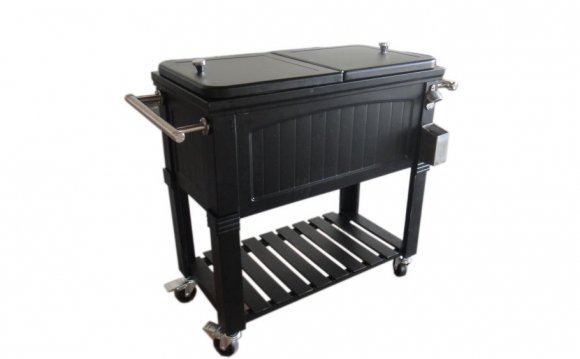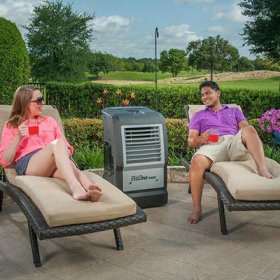

|
Portable Coolers |
• Cools small spaces up to 300 sq. ft. |
|
Window/Through-the-Wall Coolers |
• Can cool one room or a garage |
|
Down Discharge Coolers |
• Installed on roof
|
|
Side Discharge Coolers |
• Typically installed on side of building directly into the attic area
|
The two types of for evaporative coolers are fiber (made of various materials) and rigid media pads.
Fiber pads are inexpensive but require more maintenance and replacement, while rigid media pads are more expensive but require less maintenance and may last for years if properly maintained.
| Type | Materials | Points to Consider |
|---|---|---|

Fiber |
• Aspen wood
|
• For units with inlets on many sides
|
|
Rigid Media |
Stacked corrugated sheet material |
• For units with single inlets
|
 CFM Ratings
CFM Ratings
For the most cooling power, you’ll need to know how much air the unit needs to move to cool your home, which is measured in cubic feet per minute.
Evaporative coolers are rated by CFM. Use this formula to calculate the CFM for cooling your home:
- Determine the square footage of space you want to cool.
- Multiply this figure by the height of your ceilings.
- Divide that number by 2.
- The result is the CFM rating for the evaporative cooler you need.
Evaporative Cooler Maintenance & Accessories
Keep the rust- and corrosion-resistant galvanized steel that most whole-house evaporative cooler housings are made of intact with monthly inspections.
Regular maintenance per the owner’s manual is the best way to keep your evaporative cooler working at peak efficiency.
Maintenance is usually centered on draining water to remove mineral buildup, and adjusting the belt and water levels.
If the unit isn’t going to be used for a few days, it should be drained to reduce bacteria growth, which can also be controlled by adding one of several accessories before operation.
Add any of these accessories to match your evaporative cooler to your specific needs:
• Purge pumps: Purge water automatically every six or eight hours, helping to avoid mineral buildup.
• Ceiling vents: If open windows are a security issue, these ducts allow warm air to exhaust into the attic and out through the roof vents. This option may require additional ventilation in the attic.
• Pre-filters: Help prevent water droplets from the pads from being pulled into the fan blades. Most evaporative coolers also have filters to remove dust from the incoming air.









